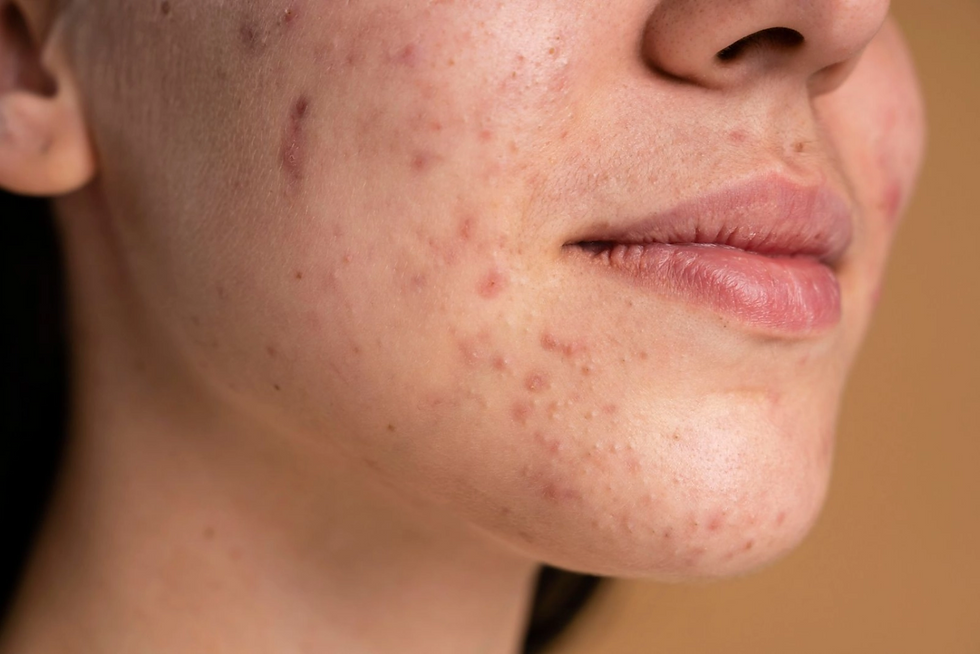What Is Melasma and How Is It Treated?
- Laraib Naeem
- Jul 10
- 3 min read
Melasma is a common skin condition characterized by dark, patchy discoloration that typically appears on the face. This condition primarily affects areas exposed to the sun, such as the cheeks, forehead, nose, and upper lip. Melasma occurs due to an overproduction of melanin, the pigment responsible for skin color, leading to uneven skin tone. Understanding what melasma is and how it is treated is essential for anyone experiencing this pigmentation issue. Effective Melasma Treatment in Dubai(علاج الكلف في دبي) not only improves appearance but also boosts confidence and prevents the condition from worsening.
Importance of Treating Melasma:
Treating melasma is important because it can significantly impact one’s self-esteem and quality of life. While melasma is not harmful physically, its visible nature often causes emotional distress. Left untreated, melasma can darken and spread, especially with continuous sun exposure or hormonal changes. Early intervention is key to managing melasma effectively. Treatment helps to reduce pigmentation, even out skin tone, and prevent further discoloration. Additionally, addressing melasma helps maintain healthy skin by encouraging proper skincare habits like daily sun protection.

Understanding the Risks of Melasma:
Melasma itself does not pose serious health risks; however, improper treatment or ignoring the condition can lead to complications. One major risk is increased pigmentation caused by unprotected sun exposure, which can exacerbate melasma patches. Using harsh or unsuitable skin products might also irritate the skin and worsen discoloration. Another potential risk is the frustration and emotional impact that comes with persistent pigmentation issues. It’s important to approach melasma treatment carefully and consistently to avoid these pitfalls.
Benefits of Melasma Treatment:
The benefits of effective melasma treatment go beyond cosmetic improvement. Proper treatment can restore a more uniform skin tone and texture, enhancing one’s overall appearance. This can lead to improved self-confidence and a positive self-image. Treatment also helps protect the skin from further damage by encouraging regular use of sunscreen and gentle skincare. Moreover, managing melasma can prevent the pigmentation from becoming more stubborn or widespread, making future treatment easier and more effective.
Common Melasma Treatment Methods:
There are several approaches to Melasma Treatment(علاج الكلف), each targeting the reduction of pigmentation and preventing new patches from forming. Key treatments include:
Topical Creams: Ingredients like hydroquinone, retinoids, azelaic acid, and vitamin C are commonly used to lighten dark patches by slowing melanin production.
Sun Protection: Daily application of broad-spectrum sunscreen is critical in melasma treatment to prevent UV rays from worsening pigmentation.
Chemical Peels: Mild chemical peels help exfoliate the skin, promoting the removal of pigmented cells and revealing brighter skin underneath.
Laser Therapy and Microneedling: These advanced options stimulate skin renewal and can reduce pigmentation but require careful use to avoid irritation.
Consistency and patience are essential, as results can take several weeks to months to become noticeable.
Frequently Asked Questions About Melasma Treatment:
Can melasma be completely cured?
Melasma can be effectively managed and significantly faded, but complete permanent cure is rare. Continuous care and sun protection are necessary to maintain results.
Is sun exposure the main cause of melasma?
Sun exposure is a major trigger that worsens melasma, although hormonal factors and genetics also play important roles.
Are natural remedies effective for melasma?
Some natural ingredients like aloe vera or licorice extract may help lighten pigmentation, but they typically work slower and less predictably than medical treatments.
How long does melasma treatment take?
Treatment duration varies but generally requires consistent use of skincare products and sun protection for at least 8 to 12 weeks.
Can melasma recur after treatment?
Yes, melasma can return, especially if sun protection is neglected or if hormonal changes occur.
Conclusion:
Melasma is a common pigmentation disorder that affects many people worldwide, causing dark patches on the face due to excess melanin. Understanding what melasma is and how it is treated helps in managing the condition effectively. Early and consistent treatment is important to prevent worsening pigmentation, improve skin appearance, and boost confidence. Various treatment methods, including topical creams, sun protection, and professional procedures, can reduce melasma’s visibility. While melasma can be persistent, adopting a dedicated skincare routine and avoiding triggers can keep the skin looking even-toned and healthy.



Comments